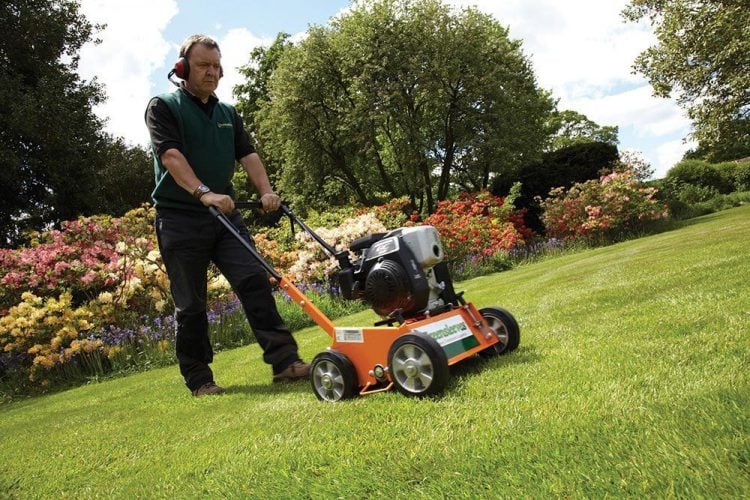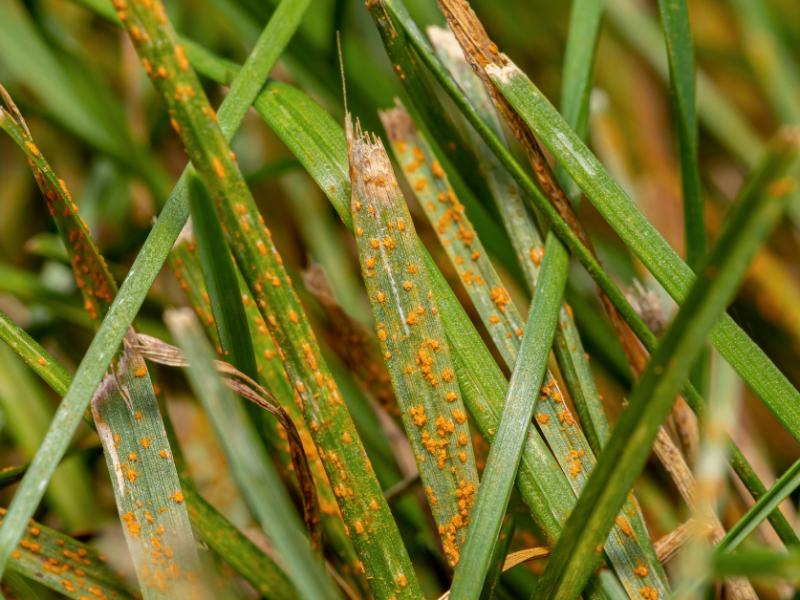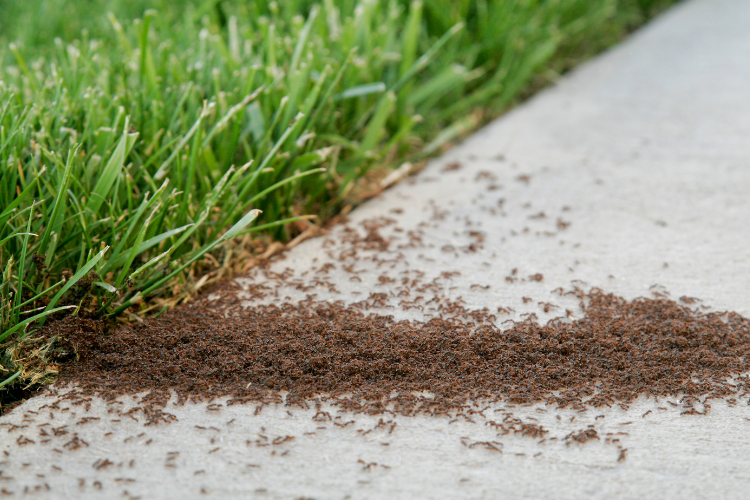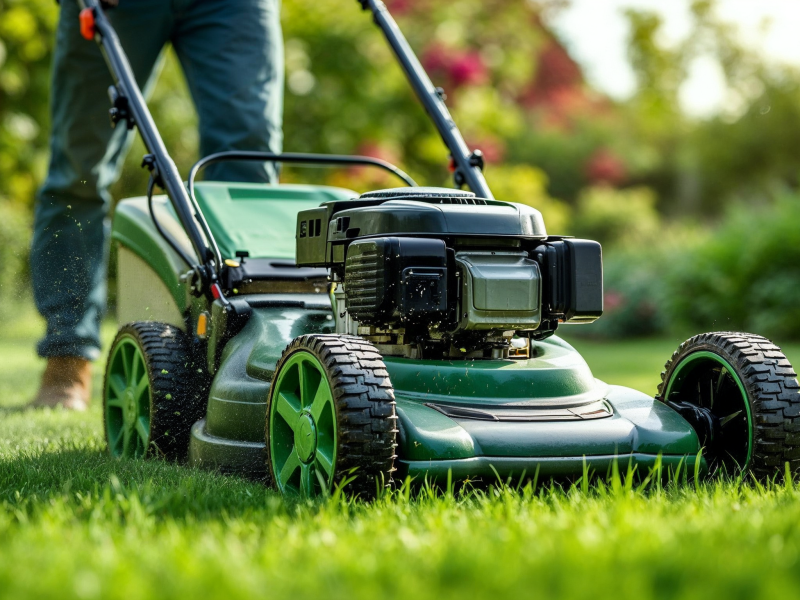Snow Mould (Fusarium Patch) is one of the most harmful diseases to lawns and can be difficult to control. This destructive fungal disease creates brown or yellow patches on the lawn, often during autumn, winter and early spring, but outbreaks can occur at any time of the year.
Signs of Snow Mould in your lawn can indicate that it is under stress, and whilst it can strike anytime, it is often visible after a covering of snow. Hence, it’s given the name of Snow Mould. When the lawn is covered in a layer of snow or debris, the moist and near-freezing conditions are an ideal environment for Snow Mould fungi to thrive.
There are two types of Snow Mould disease: Typhula Incarnate (grey) and Microdochium Nivale (pink). Grey Snow Mould appears after prolonged snow cover, whereas pink Snow Mould becomes active in cool, wet weather. Both diseases produce patches of dying grass that can increase to reach 30cm or more in diameter and often merge together, affecting larger areas of the lawn.
To effectively treat Snow Mould, Greensleeves have a number of options, including the application of a suitable fungicide to kill the fungal activity. From a practical point of view, it is important to enable the lawn to shed moisture as effectively as possible; this can be done with a combination of scarification, spiking and hollow tine aeration. These vital treatments can be carried out by your local Lawn Care Expert
The key to preventing Snow Mould is to maintain a healthy lawn by scarifying frequently. This mechanical process removes excess thatch and moss that has accumulated in the lawn. Your qualified local Lawn Care Expert will use this professional machine to slice into the lawn in a vertical manner with a series of blades that rotate at high speed. This machine is only available to professionals and should not be confused with the typical machine available on the domestic market. Greensleeves’ professional machine will result in a much more effective treatment than by simply using a DIY tool.
After the process of scarification, hollow tine aeration may then be required. Over time the soil becomes compact, squeezing the particles together which reduces the grasses ability to grow. This procedure takes small plugs from the lawn, easing compaction and sub-surface thatch. This method allows air, water and vital nutrients to penetrate the root zone. An alternative way of aerating the lawn is spiking, this process is similar to hollow tine aeration but creates smaller holes in the lawn.
At Greensleeves, we advise on a regular mowing practice. It is easy to neglect our lawns and stay indoors during the winter months, but this approach can be fatal for our lawn’s health. During the main growing season of April-June and September-October, we advise mowing the lawn as much as possible, or at least once per week. Do not be afraid to mow the lawn in winter as long as the lawn isn’t waterlogged or frozen as this can cause damage to the grass blades. Ensure your mower is well maintained by servicing it often and keep the blades sharp in order to provide a seamless cut.
Find out more information about Greensleeves by exploring our website. We also have a massive range of other blogs full of information for you such as our moss removal blog.





